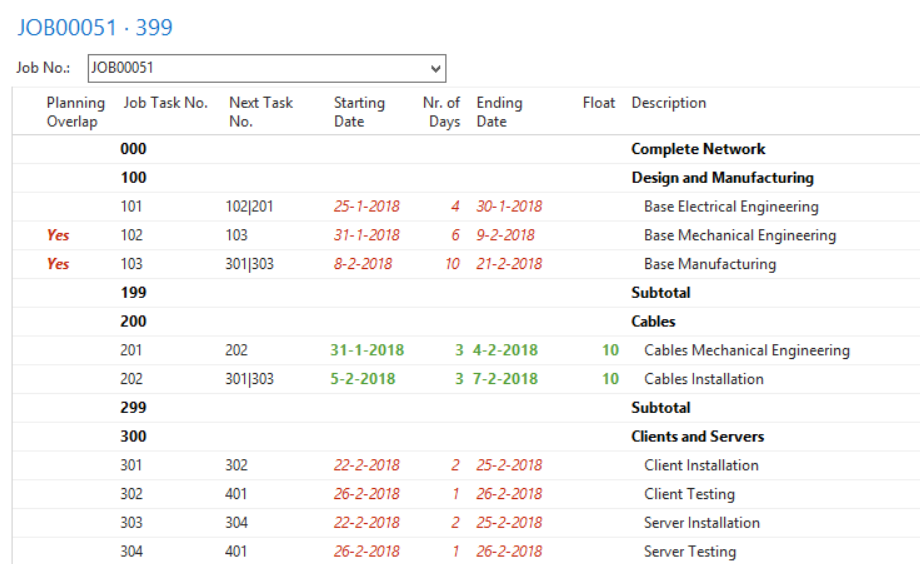Critical Path Method (CPM) soon available in our Industrial Equipment Manufacturing solution suite for project-based manufacturers
In the upcoming release of Industrial Equipment Manufacturing for Microsoft Dynamics NAV, we have incorporated the Critical Path Method or CPM in the Advanced Job Management functionality area. That means you will be able to use the Critical Path Method approach in your project planning. We designed our solution updates to keep CPM on your projects as controlled and transparent as possible.
Understanding what CPM does
CPM is a project modeling technique originally developed in the 1950s. In various iterations, it has been used in manufacturing, engineering, plant maintenance, and many other disciplines. Many project-based manufacturers rely on a modern flavor of CPM. Today, we would describe CPM as an algorithm that could apply to any project which involves multiple, interdependent activities.
In CPM, you calculate the shortest time possible to complete a project. The calculation method establishes the longest path of activities in reaching your project goal, along with the earliest and latest times that each activity can start or finish without lengthening the project. CPM determines which activities are critical – they are on the longest path – and which can be delayed without extending the project, a property known as “float.”
Visual, intuitive, and efficient CPM
In the Advanced Job Management module of Industrial Equipment Manufacturing, you will find the Critical Path Method enabled by means of a number of changes and enhancements. Take a look at the screen image below to get a sense of how this works. CPM-related updates include the following:
-
Every Job Task can point to one or more Next Tasks. There is no longer a separate setting for serial or parallel data calculations.
-
When you Initialize Task Dates, the solution calculates the critical path and shows Job Task dates in red.
-
In a separate column, Parallel Tasks indicate float days in green. You can move them without disturbing the critical path.
-
When you Initialize Task Dates, you can either calculate Job Task dates forward from the Job starting date or backward from its end date. Once the first task is underway, you can only perform forward calculations.
-
A Planning Overlap alerts you to recalculate the critical path when the number of days or the end date has changed in such a way that there is an overlap with the next Job Task.
-
When you change Job Task Dates planning conflicts may occur on the Job Task Planning lines. Job Tasks with conflicts will be highlighted so you can resolve them from the Job Task Planning lines
-
The fields indicating duration and start and end dates are now linked: when changing a duration, a new end-date will be calculated, when changing a date, a new duration will be calculated.
These enhancements should help you take advantage of CPM in an efficient, controlled manner. If you want to learn more, or see a demo of the CPM and other new features in Industrial Equipment Manufacturing, please get in touch. Send me a note using the form below.





